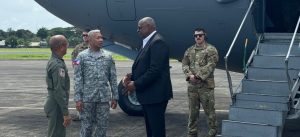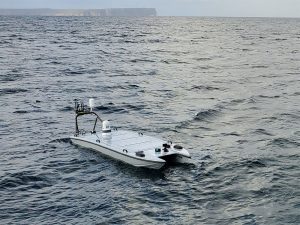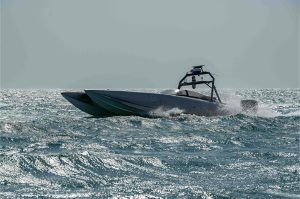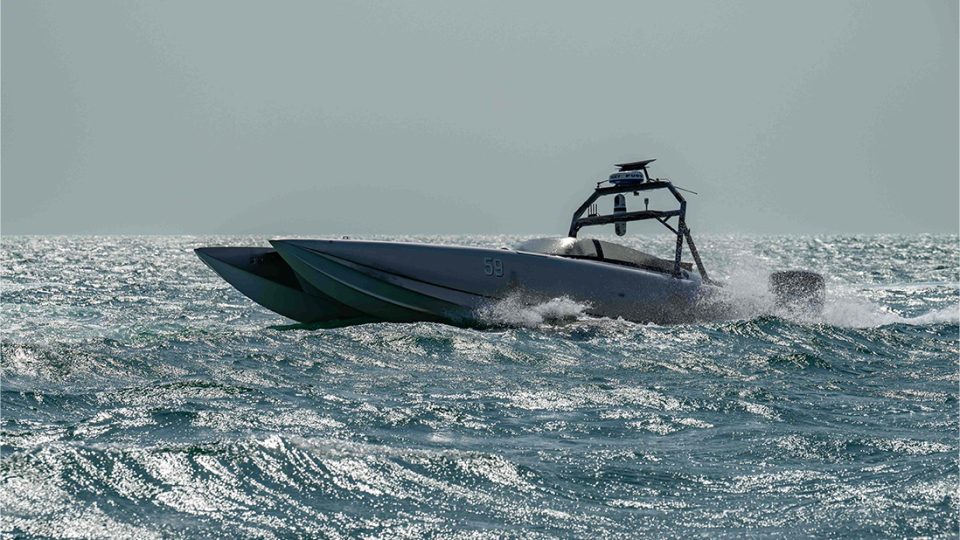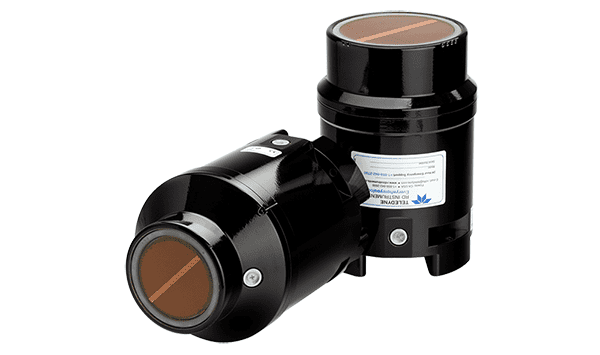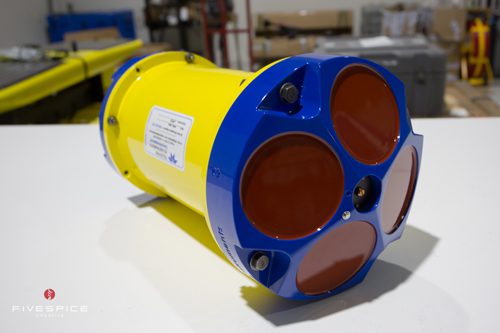MARTAC T-12 and T-38 USVs Enhance Philippine Sovereignty in the South China Sea
Uncrewed Surface Vessels Showcase a New Era in Philippine Maritime Surveillance
Puerto Princesa, Philippines is situated on the front lines of the South China Sea’s contested waters, the Western Command of the Armed Forces (WESCOM) of the Philippines on Palawan Island is key in monitoring and securing the Philippines’ territorial integrity in the region. This strategically important command centre is charged with maintaining a vigilant presence in the West Philippine Sea – an area increasingly challenged by China’s aggressive maritime claims.
The Philippine high-stakes environment is being supported by U.S. technology equipped with cutting edge technologies to enhance its capabilities for surveillance, intelligence gathering, and coastal defence. Among the most significant additions are the MARTAC T-12 and T-38 Uncrewed Surface Vessels (USVs), both of which were deployed to the region in May, as part of a U.S. security assistance package. These advanced vessels are designed for autonomous operations and capable for conducting real-time maritime monitoring and are playing a crucial role in strengthening the Philippines’ defence capabilities.
As China continues to assert expansive territorial claims over the South China Sea, including areas within the Philippine Exclusive Economic Zone (EEZ), the threat to regional stability has escalated. During a recent visit to the country, U.S. Defence Secretary Llyod Austin and Philippine Secretary of National Defence Gilberto Teodoro reported how over the past three months there has been an uptick in Chinese aggressiveness towards the Philippines.
“It’s the same story over and over again,” Teodoro told reporters. “They have been more aggressive in denying us access to our exclusive economic zone in the West Philippine Sea. They have really placed a lot of these pseudo-military vessels disguised as Coast Guard vessels and maritime militia vessels in the areas of the West Philippine Sea. They have been very aggressive in their information operations against the Philippines.”
“The behaviour of the PRC has been concerning. You’ve heard me say that a number of times. They’ve used dangerous and escalatory measures to enforce their expansive South China Sea maritime claims,” Austin said. “We condemn dangerous actions by the PRC against lawful Philippine operations in the South China Sea… Again, we’ll continue to work with our allies and make sure that we’re doing the right thing to promote a secure and open Indo-Pacific.”
Austin flew an hour from Manila to see the brand-new intelligence-fusion centre and receive a demonstration of the USVs. For the demonstration, the sailors put a T-12 onto blocks to showcase the technology included on the vessel. The T-12 USV is a smaller vessel equipped with autonomous collision-avoidance technology and either an optical camera or sonar rig, providing crucial surveillance data to the commanders on both the Philippine and U.S. sides. With a range of up to 39 miles and the ability to operate in wave heights up to three feet, the T-12 can be deployed to observe and monitor high-risk areas in shallow waters or confined spaces such as harbours or channels.
The T-38 is a larger USV that offers great range and operational capacity. Capable of handling more demanding missions, the T-38 has proven to be an essential asset for open-water operations. The Philippine sailors showcased the T-38 USV to Austin, where the control was demonstrated in Subic Bay, around 350 miles north of Puerto Princesa. With its enhanced payload capacity and longer endurance, the T-38 is well-suited for a variety of missions from surveillance and reconnaissance to anti-surface warfare operations.
The T-12 and T-38 USVs are the first in Philippine Navy and are part of a boarder effort by the U.S. to support its ally in defending its maritime rights. Marine Staff Sgt. Logan Hampton, stationed in the Philippines to assist with the integration emphasised the importance of interoperability between the U.S. and the Philippine forces. “This stuff right here is all Philippines-owned,” Hampton said gesturing to a T-12 and two aerial drones. “We help them with the interoperability and integration… It’s all about building relationships and working by, with, and through the partners, and it’s their show.”
“We’re procuring them for them at the same time as us. And even [the T-12] is a little bit ahead of what we have, just because we are developing TTPs [techniques, tactics and procedures] and everything else together,” Hampton said. “We are doing AAR – after-action reviews – and we’re just together Phil and U.S. side, trying to develop this as quick as possible.”
In Austin’s visit to WESCOM, he reaffirmed the importance of these uncrewed platforms in ensuring the security and stability of the Indo-Pacific region. “The T-12 is one of several unmanned capabilities funded and delivered this year through the U.S. security assistance,” Austin remarked. “We expect to see many more platforms like this delivered with the $500 million in foreign military financing that I announced during my visit to the Philippines in July. This will help ensure that the Philippines has the capabilities that it needs to defend its rights and its sovereignty throughout its exclusive economic zone.”
The integration of MARTAC’s T-12 and T-38 USVs into the Philippine Navy’s operational arsenal represents a significant step forward in enhancing the country’s maritime security and surveillance capabilities. With advanced autonomy, real-time data collection, and the support of U.S. training and funding, these USVs are transforming how the Philippines monitors and defends its waters against external threats. As tensions in the South China Sea continue to escalate, the T-12 and T-38 offer the Philippines a powerful, cost-effective solution to safeguard its territorial integrity and uphold its maritime sovereignty in one of the most contested regions in the world.
Read More:
SecDef visits South China Sea island to bolster Philippines and check China – Defense One
Philippine Navy Receives U.S. Funded USVs for SCS Operations – Naval News
